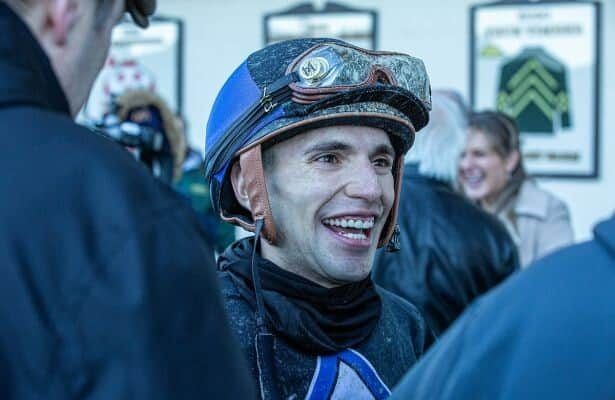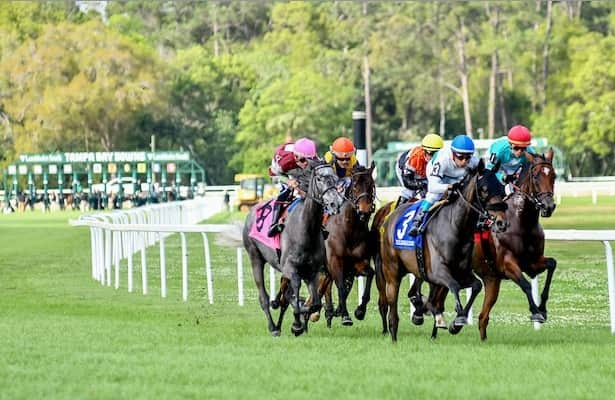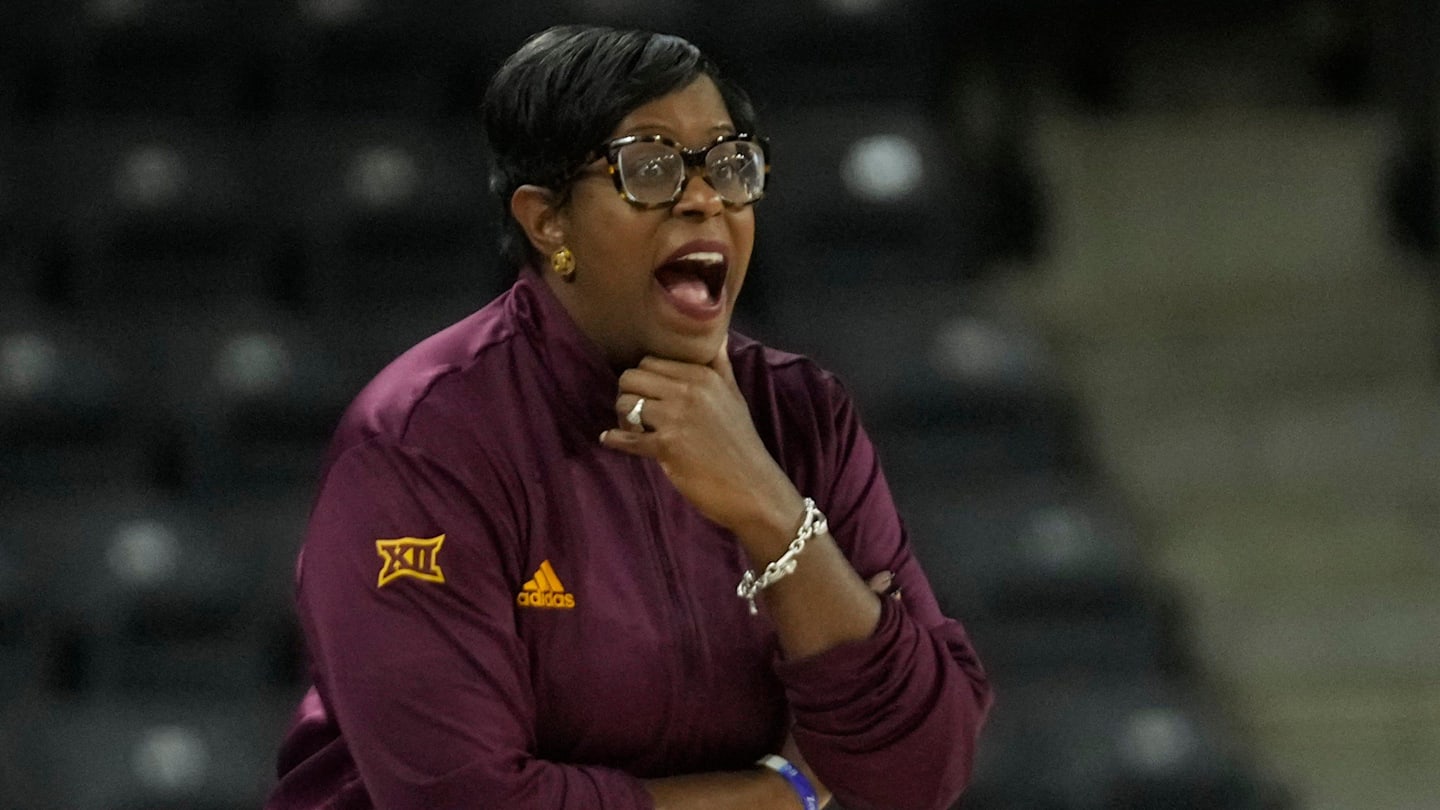Op/Ed: Are So Few Really Capable Of Training The Good Horses?

According to the Encyclopedia Britanica, a self-fulfilling prophecy is the “process through which an originally false expectation leads to its own confirmation.”
Horse racing’s self-fulfilling prophesy appears to be the belief that only a select few trainers are capable of eliciting from the sport’s finest Thoroughbred athletes their optimum talent.
This notion reached an absurd low last month when a commentator for the UK’s Racing Post argued that owners in possession of the best steeplechasers in England and Ireland should essentially have their heads examined for sending their horses to any trainer other than Nicky Henderson or Willie Mullins.
“Not all trainers are equal. It’s a hard thing to be good at and it’s so easy for things to go wrong, so if you have a good horse I can see why you would want to go anywhere else,” the argument went.
Henderson and Mullins are among the lucky few beneficiaries of the entrenchment of top jumping talent among fewer hands. How entrenched? At the 2023 Cheltenham festival–Britain’s Breeders’ Cup of jump racing–Mullins won an almost unfathomable 10 of the 28 races on offer. One trainer annexing more than a third of one meet’s races. Think about that for a moment.
It didn’t used to be like this. Go back a decade or so, and the winner’s roster at Cheltenham fielded a much more eclectic list of names. Apparently during the intervening years, all other trainers not named Henderson and Mullins have forgotten how to train a good racehorse, either in one sudden case of collective amnesia or gradually, bit by bit, until one morning they woke up barely able to differentiate a frog from a fetlock.
The consolidation of top horses among fewer hands has been a narrative over here on U.S. shores for a long time. Top bloodstock has always gravitated towards certain stables. But when racehorses were plentiful, the assignations of owners had less consequence. There were enough good horses to give enough of the sport’s lesser–but equally capable–lights a chance to burnish the main stage.
But with the foal crop having halved over the past 25 years (from 34,728 in 2000 to 17,200 last year), the industry should no longer be so narrow-minded about apportioning out its equine talent. There just aren’t the horses anymore. The training ranks have suffered massive declines, too. If attrition has a habit of weeding out the weak, what this suggests is that among the remaining players is a higher concentration than ever before of talented operators.
If more good horses were stabled among a wider array of these good barns, therefore, just imagine what a boon that would be across the board–from the trainers to the horses to the sport’s ledgers.
Here it needs to be noted that the nation’s mega-stables grew to dominance through sheer professionalism. Spend any time in one of these barns and you’ll find yourself immersed in the gleaming mechanics of a well-oiled machine, peopled by some of the most talented riders, grooms, foremen and farriers to lay hand on horse.
The thing is, the more training becomes a big numbers game, big-race success becomes less an indicator of true merit than it does the markings of a skewed system weighted to favor the few.
Indeed, a strong argument can be made that it takes a set of rarer skills and imagination to navigate a horse to a big win when your barn is only 20 horses strong than it does when you’ve 100+ horses at your disposal, and one injured star can be replaced by two-dozen more waiting in the wings.
“Nobody can make a slow horse run–they have to be given opportunities [with good horses],” said John Sadler, who, since the 1970s, has built a consistently successful career founded on reward for good work. “It’s the same for a jock. You can’t tell anything about a jock until they’re given the chance to show you what they’re made of.”
Are enough of racing’s best and brightest trainers getting those opportunities? Sure doesn’t seem like it.
Last week, Jonathan Thomas told the TDN he was down to just 19 horses–the smallest he’s been “by far”–even after a rash of big wins in California, an eight-year run of 20 graded stakes victories, and a Catholic Boy for good measure.
Dan Blacker has executed arguably one of the finest training performances in recent years shepherding Straight No Chaser (Speightstown)–a fast horse with a fragile chassis–to big race glory in Saudi Arabia and in the Breeders’ Cup.
Asked after Straight No Chaser’s Breeders’ Cup and Eclipse Award successes, Blacker said he had received no new horses or owners on the back of these exploits. “I’ve proved I can compete with the top guy on the dirt. Just need a little more help from the big owners,” he wrote in a text.
Trainer Jena Antonucci has fared a little better since winning the Belmont and Travers Stakes with Arcangelo (Arrogate). “We’re working in that direction,” she said, when asked if that success has translated into more good horses under her care.
Antonucci mainly credits that to the work she has done in recent years building an audience to her astute ideas on training and running a business. “Arcangelo opened the door on conversations and opportunities that weren’t there before because people got to look behind the curtain,” she said.
Yet Antonucci hasn’t enjoyed a graded stakes win since August of 2023. And her articulate and thoughtful PR blitz in the aftermath of Arcangelo‘s successes–which did a yeoman’s task of elevating the sport–is quickly fading into the past.
Which leads to another needed outcome from this equation–the benefit to the horse.
Many horses clearly thrive in a mega-stable environment. They fit that regime the way certain soldiers do a military regiment. They like the consistency. The continuity. The hard work thrown at them with clockwork regularity.
But for every horse that flourishes under this routine, how many get lost in it? The flighty, nervous sort that goes off her feed like a change of the wind. The timid sort easily soured if disappointed too often of a morning. The well-bred colt pushed to the margins by his more precocious stablemates.
There’s only so much individual attention you can afford a horse when you have a small army to get out before the track closes. And logic suggests that plenty of mega-stable horses could do better under the watchful eye of a hungry, talented trainer with more time for each horse in their care. The time to study and deconstruct idiosyncrasies. The time to swap things around if something’s not working.
Think of what this would look like on big race days. Fuller fields carded. More trainers competing. More handle generated. Bigger purses offered.
The alternative is to keep doing what we’re doing. No wonder fans are checking out. Even Willie Mullins’s son admits the Cheltenham festival is losing luster under a lop-sided playing field.
“It was an incredible week and I felt great pride at Willie making 100 [festival wins], but I do feel embarrassment at our success too,” jockey Patrick Mullins wrote, after the 2024 festival, when the stable won eight of the 27 races on offer. “Cheltenham shouldn’t really be like this and the winners before felt different. Better. Maybe you shouldn’t say that. Maybe you can’t say that. But it’s the truth.”
Horse racing is in an existential crisis, or so we’re told. A portion of the public is actively urging for its demise. Venal track owners looking to cash in on valuable real estate holdings. It can be easy to feel helpless in the face of such assaults. But who gets to train what is something the industry has agency over, can do something about, and about which the results could have a quick and profound impact.
As powerful syndicates have replaced the individual ownerships and traditional breed-to-race farms, this isn’t going to be easy. Too often now, narrow commercial interests have become the northern star. But for those really desiring to see this sport thrive, grow and prosper–including the agents and managers making inventory decisions on behalf of many powerful groups–why not give more thoughtful consideration than ever before to where your horses would best thrive. Think outside the box.
Better still, why not call up some of the sport’s brightest underused talents and hear what they have to say about it themselves.
Related
Leading Parx jockey Sanchez will serve 7-day suspension
Photo: Jason Moran / Eclipse Sportswire Jockey Mychel Sanchez will serve a seven-day suspension and pay an additional $1,750 in fines
Bill Mott talks about plans for Sovereignty, Just F Y…
Photo: Gulfstream Park / Lauren King Sovereignty, dramatic late-running winner of the Fountain of Youth (G2) March 1, is being pointed
Up-and-coming Cavalieri chases Grade 1 glory in Beholder Mile
Photo: Santa Anita / Benoit Photo Cavalieri and Alpha Bella, who finished one-two in the Grade 3 La Cañada in January at Santa Anita,
4 stakes showcase shipping stars on Tampa Bay undercard
Photo: Gonzalo Anteliz Jr. / Eclipse Sportswire The stars will shine Saturday at Tampa Bay Downs, and not just in the Grade 3 Tampa Ba












